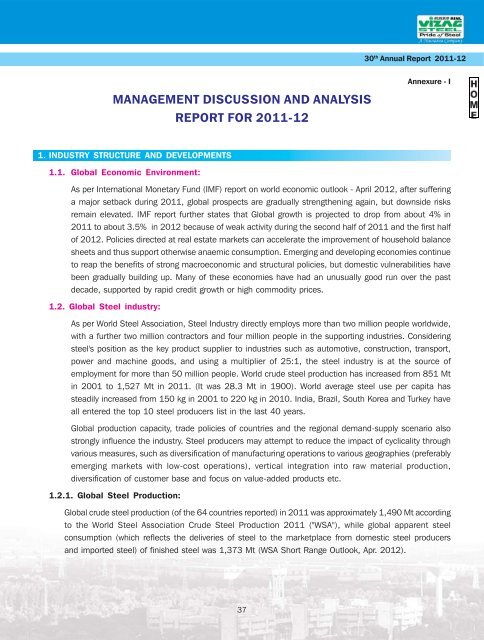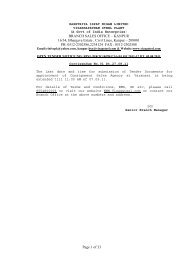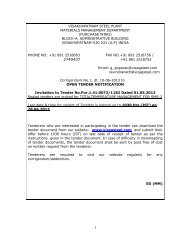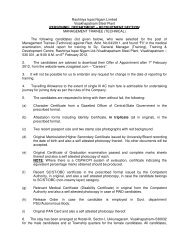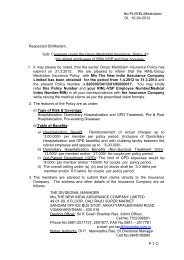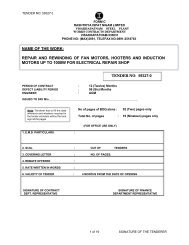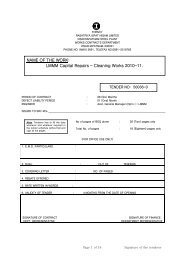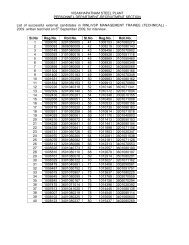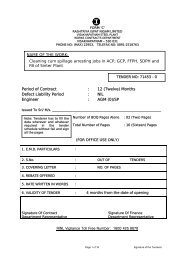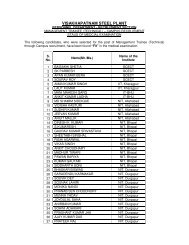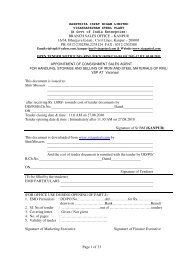Annual Report for 2011-2012 - Vizag Steel
Annual Report for 2011-2012 - Vizag Steel
Annual Report for 2011-2012 - Vizag Steel
- No tags were found...
You also want an ePaper? Increase the reach of your titles
YUMPU automatically turns print PDFs into web optimized ePapers that Google loves.
30 th <strong>Annual</strong> <strong>Report</strong> <strong>2011</strong>-12<br />
MANAGEMENT DISCUSSION AND ANALYSIS<br />
REPORT FOR <strong>2011</strong>-12<br />
Annexure - I<br />
1. INDUSTRY STRUCTURE AND DEVELOPMENTS<br />
1.1. Global Economic Environment:<br />
As per International Monetary Fund (IMF) report on world economic outlook - April <strong>2012</strong>, after suffering<br />
a major setback during <strong>2011</strong>, global prospects are gradually strengthening again, but downside risks<br />
remain elevated. IMF report further states that Global growth is projected to drop from about 4% in<br />
<strong>2011</strong> to about 3.5% in <strong>2012</strong> because of weak activity during the second half of <strong>2011</strong> and the first half<br />
of <strong>2012</strong>. Policies directed at real estate markets can accelerate the improvement of household balance<br />
sheets and thus support otherwise anaemic consumption. Emerging and developing economies continue<br />
to reap the benefits of strong macroeconomic and structural policies, but domestic vulnerabilities have<br />
been gradually building up. Many of these economies have had an unusually good run over the past<br />
decade, supported by rapid credit growth or high commodity prices.<br />
1.2. Global <strong>Steel</strong> industry:<br />
As per World <strong>Steel</strong> Association, <strong>Steel</strong> Industry directly employs more than two million people worldwide,<br />
with a further two million contractors and four million people in the supporting industries. Considering<br />
steel's position as the key product supplier to industries such as automotive, construction, transport,<br />
power and machine goods, and using a multiplier of 25:1, the steel industry is at the source of<br />
employment <strong>for</strong> more than 50 million people. World crude steel production has increased from 851 Mt<br />
in 2001 to 1,527 Mt in <strong>2011</strong>. (It was 28.3 Mt in 1900). World average steel use per capita has<br />
steadily increased from 150 kg in 2001 to 220 kg in 2010. India, Brazil, South Korea and Turkey have<br />
all entered the top 10 steel producers list in the last 40 years.<br />
Global production capacity, trade policies of countries and the regional demand-supply scenario also<br />
strongly influence the industry. <strong>Steel</strong> producers may attempt to reduce the impact of cyclicality through<br />
various measures, such as diversification of manufacturing operations to various geographies (preferably<br />
emerging markets with low-cost operations), vertical integration into raw material production,<br />
diversification of customer base and focus on value-added products etc.<br />
1.2.1. Global <strong>Steel</strong> Production:<br />
Global crude steel production (of the 64 countries reported) in <strong>2011</strong> was approximately 1,490 Mt according<br />
to the World <strong>Steel</strong> Association Crude <strong>Steel</strong> Production <strong>2011</strong> ("WSA"), while global apparent steel<br />
consumption (which reflects the deliveries of steel to the marketplace from domestic steel producers<br />
and imported steel) of finished steel was 1,373 Mt (WSA Short Range Outlook, Apr. <strong>2012</strong>).<br />
37


